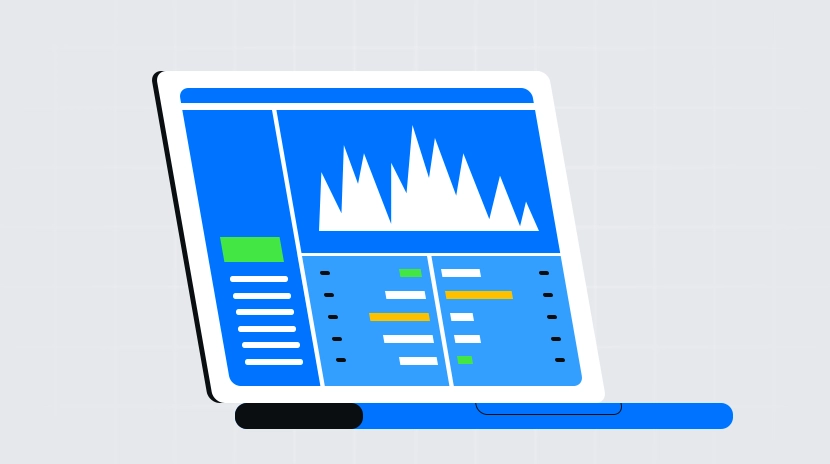Learning from history, when will the capital expenditure boom turn into a bubble burst?
From 19th-century railroads to 21st-century artificial intelligence, every major technological breakthrough in history has triggered a surge in capital spending—and most of these frenzies end with the collapse of a bubble.
In November, BCA Research published a special report, “When Capex Booms Turn Into Busts: Lessons From History,” which reviews four classic capex booms, reveals the core logic behind the shift from boom to bust, and warns about the risks in the current AI craze.
The report identifies five common patterns: investors ignore the S-curve of technology adoption; revenue forecasts underestimate the magnitude of price declines; debt becomes the central source of financing; asset price peaks come before investment declines; and capital expenditure collapses intensify economic downturns. These patterns are already emerging in today’s AI sector—technology adoption rates have stalled, token prices have crashed by over 99%, corporate debt is surging, and GPU rental costs are falling.
Drawing on historical comparisons, BCA Research concludes that the AI boom is following the historical trajectory of past bubbles and is likely to end within the next 6 to 12 months. The report recommends that investors maintain a neutral equity allocation in the short term, moderately underweight stocks in the medium term, and closely monitor forward-looking indicators such as analyst forecast revisions, GPU rental costs, and corporate free cash flow.
The report points out additional concerns in the current economic landscape: U.S. job openings have dropped to a five-year low. If the AI boom fades and no new bubble emerges to offset the impact, the coming recession could be even more severe than the aftermath of the 2001 dot-com crash.
Historical Lessons: How Four Capital Sprees Collapsed
BCA notes that capex booms are driven by collective optimism about the commercial potential of new technologies. Yet history repeatedly shows that this optimism often strays from the realities of technological deployment, ultimately collapsing due to supply-demand imbalances, mounting debt, and inflated valuations.
The 19th-century British and American railroad booms demonstrated the destructive impact of excess capacity.
According to the report, the Liverpool-Manchester railway’s success in 1830 sparked an investment frenzy in the UK, with railroad stock prices nearly doubling from 1843 to 1845.
By 1847, rail construction spending had soared to a record 7% of UK GDP. Liquidity tightening triggered a financial crisis in October 1847, and the rail index crashed by 65% from its peak.
The report notes that the U.S. railroad boom peaked during the Panic of 1873, forcing the New York Stock Exchange to close for ten days. Corporate bond defaults between 1873 and 1875 amounted to 36% of face value.
After U.S. rail mileage hit a high of over 13,000 miles in 1887, excess capacity drove transportation prices down, and by 1894, about 20% of U.S. rail mileage was in bankruptcy.
The electrification boom of the 1920s exposed the risks of pyramid-like capital structures.
The report states that household electrification jumped from 8% in 1907 to 68% in 1930, although mostly in cities.
Wall Street was deeply involved, marketing utility stocks and bonds as “safe for widows and orphans.” By 1929, holding companies controlled over 80% of U.S. electricity generation.
After the 1929 crash, the biggest utility group, Insull, collapsed in 1932, reportedly wiping out the life savings of 600,000 small investors. U.S. utility construction spending peaked at $919 million in 1930 and plunged to $129 million by 1933.
The late-1990s internet boom proved that innovation doesn’t guarantee profits.
BCA reports that U.S. nonfarm business productivity grew at an annualized 3.1% between 1995 and 2004—well above subsequent periods.
But tech sector capex as a share of GDP soared from 2.9% in 1992 to 4.5% in 2000, with overinvestment putting huge pressure on corporate balance sheets.
The report notes that telecom free cash flow peaked in late 1997, then declined sharply, with a steep drop in 2000. The NASDAQ Composite Index rose sixfold from 1995 to 2000, then plunged 78% over the next two and a half years.
Multiple oil booms perfectly illustrate the cyclical nature of supply-demand imbalances.
BCA reports that after a massive oil find in East Texas in 1930, daily output topped 300,000 barrels within a year. But the Great Depression drove prices down to 10 cents per barrel.
In 1985, Saudi Arabia abandoned production quotas, sending oil down to $10 per barrel.
From 2008 to 2015, the U.S. shale boom pushed crude oil output from 5 million to 9.4 million barrels a day. OPEC’s refusal to cut production in 2014 sent prices from $115 per barrel midyear to $57 by year-end.
Five Universal Patterns: The Road from Boom to Bust
Looking back at the rise and fall of four classic booms, BCA Research distills five universal patterns that serve as key benchmarks for tracking the current AI frenzy. Specifically:
Pattern one: Investors ignore the S-curve of technology adoption.
Technology adoption never moves in a straight line; it follows an S-curve of “early adopters—mass adoption—latecomers.” Stock prices typically climb in the first phase and peak in the middle of the second, when adoption rate growth turns negative.
We’re seeing this now in AI: Most companies say they plan to increase AI usage, but actual adoption rates have stalled, and some metrics have even declined recently. This gap between “intent and action” is a classic sign that adoption has entered the late second phase.
Pattern two: Revenue forecasts underestimate price declines.
New technologies initially command premium prices, but as adoption spreads and competition grows, prices inevitably fall. From 1998 to 2015, internet traffic grew at a 67% annualized rate, but unit data transmission prices collapsed. Solar panel prices have fallen steadily since their debut, dropping 95% since 2007 alone.
The AI sector is repeating this cycle: Since 2023, faster chips and better algorithms have driven token prices down over 99%. While new applications like video generation are emerging, users’ willingness to pay remains unclear.
Pattern three: Debt becomes central to financing.
At the start of a boom, companies usually fund capex from retained earnings, but as investment ramps up, debt becomes the main source.
In October 2025, Meta announced a $27 billion data center financing deal via off-balance-sheet special purpose entities. Oracle secured a $38 billion loan, then raised another $18 billion in bonds, bringing total debt near $96 billion.
Even more troubling is the rise of new cloud providers like CoreWeave. As of October 2025, CoreWeave’s credit default swap rate jumped from 359 to 532 basis points.
Pattern four: Asset price peaks come before investment spending declines.
Historically, asset prices—like stocks—peak during capex booms before actual investment spending starts to drop. Even as spending falls from the peak, absolute levels can stay high, worsening overcapacity. Investors who wait for “clear signs of declining investment” often miss the best window to act.
Pattern five: Capex busts and recessions reinforce each other.
Tech bubbles tend to burst in two stages:
The first is the end of speculation and the onset of overcapacity; the second is a collapse in capex dragging down the broader economy and driving corporate profits into a downward spiral.
The report notes that the 2001 U.S. recession wasn’t caused by weakening fundamentals, but by the collapse in capex following the dot-com bust. The real estate bubble in 2002 temporarily offset the shock, but it’s unclear if another bubble will cushion the fallout from an AI bust.
AI Boom Risk Signals: A Turning Point Within 6–12 Months
Based on historical patterns, BCA Research believes the AI boom mirrors previous bubbles and will likely end within 6 to 12 months. This view is backed by multiple risk signals already evident in the AI sector.
On adoption: AI’s real-world rollout is lagging behind intense capital enthusiasm. Corporate adoption rates are stuck, and consumer willingness to pay for AI apps remains unproven.
On pricing: The sharp drop in token prices signals deflationary pressure, while the commercial value of new applications like video generation is still uncertain.
On debt: AI firms’ capital structures increasingly rely on debt, and credit risk is starting to emerge for some players.
The report highlights four key forward-looking indicators:
First, analysts’ revisions to future capex forecasts—if ever-rising projections flatten out, it could be a warning sign;
Second, GPU rental costs, which have started to decline since May 2025;
Third, the free cash flow of hyperscale companies, which, though still high, is showing signs of deterioration;
Fourth, a “metaverse moment”—when an AI company’s stock falls after announcing a major project, signaling a clear shift in market sentiment.
BCA Research recommends a “moderately defensive” investment strategy. In the short term (three months), maintain a neutral equity allocation; in the medium term (12 months), moderately underweight stocks; and in the coming months, increase defensiveness further.
Specifically, investors should closely monitor the four leading indicators above, avoid waiting for clear investment declines before adjusting, and consider defensive sectors and high-quality bonds to hedge against large swings in AI-linked assets.
Statement:
- This article is reprinted from [wallstreetcn], and copyright belongs to the original author [Dong Jing]. If you have concerns about this reprint, please contact the Gate Learn team, and we will address your request promptly according to our procedures.
- Disclaimer: The views and opinions expressed in this article are solely those of the author and do not constitute investment advice.
- Translations of this article were provided by the Gate Learn team. Please do not copy, distribute, or use the translated content without proper attribution to Gate.
Related Articles

Reflections on Ethereum Governance Following the 3074 Saga

Gate Research: 2024 Cryptocurrency Market Review and 2025 Trend Forecast

Gate Research: BTC Breaks $100K Milestone, November Crypto Trading Volume Exceeds $10 Trillion For First Time

NFTs and Memecoins in Last vs Current Bull Markets

Altseason 2025: Narrative Rotation and Capital Restructuring in an Atypical Bull Market
